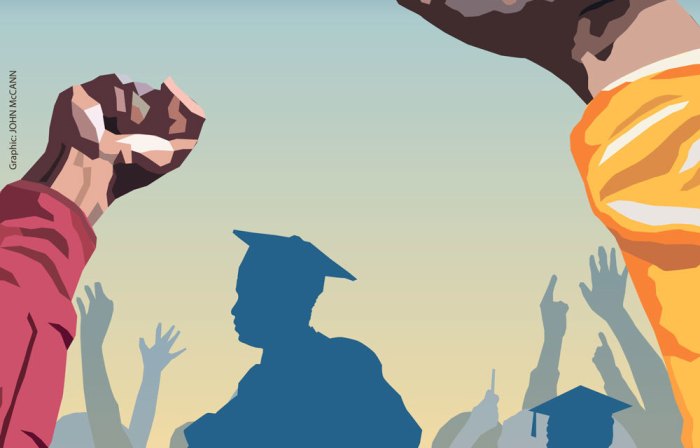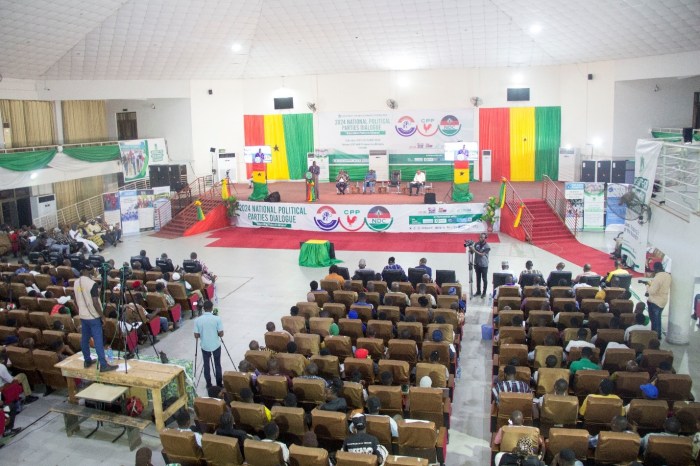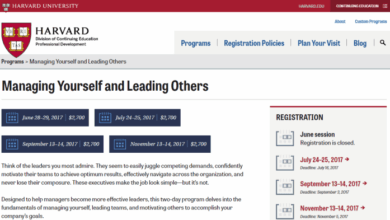
Political debates have always influenced service academies, shaping their missions, curricula, and public perception from their founding to the present. This deep dive explores the historical context, examining how political ideologies have impacted training methods, social dynamics, and ethical considerations within these institutions. We’ll also analyze the international comparisons and the evolving public discourse surrounding service academies, highlighting the complex interplay between politics and these crucial national assets.
The evolution of service academies reflects the shifting political landscapes of their respective eras. From the founding philosophies of each academy to contemporary debates on military tactics and ethical dilemmas, this exploration delves into the multifaceted ways political influence has molded these institutions. The study analyzes the direct and indirect effects of legislation, policy changes, and political figures on the academies’ development and ongoing operations.
Historical Context of Political Influence
The development and evolution of service academies in the United States have been inextricably linked to the political climate of the time. From their founding, these institutions have been shaped by prevailing ideologies, reflecting the nation’s priorities and concerns. The interplay between political forces and the academies’ missions has resulted in shifts in curriculum, training methods, and the overall ethos of these important institutions.The founding and subsequent evolution of service academies are a microcosm of American political history.
The priorities and values of the era directly impacted the design of each academy, creating a unique character for each institution while also highlighting shared commonalities in response to the needs of the nation.
Founding Ideologies and Early Influences
The creation of the first service academies, like the United States Military Academy at West Point, was directly tied to the need for a professional military force in a nation undergoing rapid expansion and internal conflict. These early academies reflected the prevailing political philosophies of the time, prioritizing discipline, loyalty, and a strong national defense.
Political Shifts and Curriculum Adjustments
Differing political ideologies have undeniably shaped the curriculum and training methods of the service academies. For instance, the rise of industrialization and technological advancements led to adjustments in the academies’ focus on engineering and scientific disciplines, adapting to the changing demands of the military. Similarly, periods of heightened international tension or war often resulted in intensified training and emphasis on specific skills.
Furthermore, evolving societal values and civil rights movements influenced the academies’ approach to diversity and inclusion, leading to progressive changes in their ethos and acceptance of diverse student populations.
Legislation and Policy Changes
Specific legislation and policy changes have directly impacted the service academies. The National Defense Act of 1916, for example, expanded the academies’ responsibilities and roles, contributing to the growth of their missions. Subsequent legislation, reflecting changing societal norms and national security concerns, have further modified their structures, programs, and operations.
Comparative Analysis of Founding Climates
| Academy | Founding Year | Political Climate (Brief Summary) | Key Political Figures/Events |
|---|---|---|---|
| United States Military Academy (West Point) | 1802 | Early Republic, focus on national security, westward expansion. | Thomas Jefferson, War of 1812 |
| United States Naval Academy | 1845 | Rapid growth of the navy, expansionist foreign policy. | James K. Polk, Mexican-American War |
| United States Air Force Academy | 1955 | Post-World War II, focus on air power, Cold War anxieties. | Dwight D. Eisenhower, Korean War |
| United States Merchant Marine Academy | 1943 | World War II and the subsequent need for a robust merchant fleet. | Franklin D. Roosevelt, World War II |
This table provides a basic comparison of the founding climates of different service academies, highlighting the distinct political contexts in which each was established. Further research could delve deeper into the specific influences of key political figures and events on the development of each institution.
Curriculum and Training
The curriculum and training at service academies are not static entities. They are constantly adapting to evolving geopolitical landscapes, technological advancements, and, crucially, shifting political priorities. These adaptations, often driven by public discourse and political debates, shape the skills and knowledge imparted to future military leaders. The pressure to respond to perceived threats and changing strategic environments directly influences the training methodologies and academic subjects offered.The political climate significantly impacts the balance between theoretical knowledge and practical application in training.
Periods of heightened international tension often see a greater emphasis on specific military tactics and strategies, while periods of relative calm might prioritize broader strategic thinking and leadership development. These adjustments are not always transparent or readily apparent, but they are nonetheless substantial, influencing the depth and breadth of knowledge cadets acquire.
Impact of Political Debates on Academic Subjects
Political debates have directly influenced the focus and depth of various academic subjects. For example, the rise of asymmetric warfare has led to increased emphasis on counter-insurgency tactics and strategies, and an exploration of the use of special operations forces. Likewise, debates surrounding cyber warfare have prompted the integration of cybersecurity principles into the curriculum. These adjustments are often made in response to real-world threats and political anxieties.
Examples of Political Influence on Military Tactics and Strategies
Political pressures have influenced the specific military tactics and strategies taught at academies. The Cold War era saw a strong emphasis on conventional warfare, reflected in the training exercises and doctrinal materials. The post-9/11 era, in contrast, witnessed a shift towards counter-terrorism and counter-insurgency operations, impacting the types of scenarios simulated in training exercises and the specific skills developed.
Comparison of Training Approaches Across Academies
While general trends exist, training approaches at different academies can vary significantly in response to political pressures. Some academies might prioritize a more technology-focused approach, adapting to the changing technological landscape of warfare, while others might focus on more traditional methods of warfare, reflecting different political priorities or strategic assessments. This variation stems from differing political viewpoints and the unique challenges each academy faces.
Impact of Political Discourse on Academy Admissions, Political debates have always influenced service academies
Differing political viewpoints have impacted the selection criteria for academy admissions. For instance, during times of political polarization, the criteria for evaluating candidates might be influenced by factors beyond traditional merit, such as the candidate’s perceived political alignment or background. These influences are often subtle but nonetheless significant in shaping the composition of the academy’s student body.
Specific Examples of Political Discourse Affecting Tactics and Strategies
The shift from Cold War-era focus on large-scale conventional warfare to the post-9/11 emphasis on counter-terrorism and irregular warfare exemplifies the direct impact of political discourse on military strategy. The Gulf War, the rise of ISIS, and the ongoing conflicts in various regions globally provide tangible examples of how political debates and perceived threats drive the evolution of military doctrine and, consequently, the training curriculum.
Political debates have always shaped the path of service academies, influencing everything from curriculum to recruitment. This echoes the ongoing discussion about the factors determining longevity, like the fascinating “genes vs lifestyle longevity study” research ( genes vs lifestyle longevity study ). Ultimately, the impact of political discourse on these institutions continues to be a key element in shaping their future.
Social and Cultural Impact: Political Debates Have Always Influenced Service Academies

Political debates often cast a long shadow over service academies, impacting the social and cultural fabric of these institutions. The very nature of these academies, dedicated to preparing future leaders, makes them particularly susceptible to the polarization and heightened rhetoric that accompany political discourse. This influence extends beyond the classroom, shaping the social dynamics, cultural norms, and even the cadets’ sense of duty and patriotism.
The resulting environment can be both challenging and transformative, creating both unity and division.
Perspectives and Opinions within the Academy Community
Cadets, like any diverse group, hold varying perspectives on political issues. Some may align strongly with specific political ideologies, while others may adopt more nuanced or independent viewpoints. These differing perspectives can create an environment of respectful dialogue and critical thinking, or, conversely, lead to heated debates and social divisions. The ability of the academy to foster a climate of understanding and tolerance is crucial in navigating these complexities.
It’s essential for leadership to promote open communication and mutual respect among cadets with diverse political views.
Role of Political Debates in Shaping Duty and Patriotism
Political debates can significantly influence cadets’ understanding of duty and patriotism. Exposure to different viewpoints, especially when those viewpoints are presented in a respectful and constructive manner, can lead to a more nuanced and comprehensive understanding of civic responsibility. However, if debates devolve into animosity and personal attacks, it can undermine the sense of shared purpose and unity that is vital for a strong sense of duty.
Effective leadership plays a critical role in ensuring that these discussions promote unity and shared values while acknowledging and respecting diversity of opinion.
Social Trends and Shifts within Service Academies
Political influence has resulted in observable social trends within service academies. These trends often manifest in shifting social circles, altered social interactions, and evolving cultural norms. For instance, the emergence of distinct political caucuses or social groups can lead to both increased engagement and potential segregation within the academy community. The ability of leadership to foster inclusivity and mutual respect is paramount.
Political debates have always played a significant role in shaping service academies, influencing everything from curriculum to training methods. Recent controversies, like the ones surrounding the shingles vaccine and its potential link to dementia, as highlighted in this article about Christopher Worsham and Anupam Jena shingles vaccine dementia christopher worsham anupam jena , further demonstrate how these discussions can impact public perception and, ultimately, the academies’ missions.
These debates, in turn, inevitably affect the academies’ approach to issues like public health and safety.
| Social Trend | Description | Examples |
|---|---|---|
| Increased Political Polarization | The tendency for cadets to align with specific political groups, sometimes to the exclusion of others. | Formation of distinct political clubs, increased engagement in political discussions, potential for social divisions. |
| Shifting Social Norms | Evolution of social interactions and expectations based on political affiliations. | Differing social circles based on political leanings, adjusted social gatherings, varying approaches to expressing political views. |
| Heightened Sensitivity to Political Discourse | Cadets becoming more conscious of political correctness and sensitivity in their interactions. | Increased awareness of microaggressions and unintentional biases, more careful consideration of language and actions, enhanced focus on respectful communication. |
| Evolving Cultural Values | Integration of differing political viewpoints into the broader cultural landscape of the academy. | Increased tolerance and understanding of different political perspectives, potential for evolving shared values, recognition of diversity of beliefs. |
Public Perception and Discourse
The public perception of service academies has been constantly shaped by political debates, often reflecting the broader societal anxieties and aspirations of the time. From the Cold War to the present day, these institutions have served as focal points for discussions about national security, military readiness, and the values they embody. Political discourse surrounding service academies has often intertwined with broader narratives about patriotism, citizenship, and the role of the military in American society.Political debates have significantly impacted the public’s perception of service academies, sometimes shifting public opinion and sometimes solidifying existing views.
Media coverage, both positive and negative, has played a crucial role in shaping the public narrative, often magnifying particular aspects of the institutions. The framing of these narratives can influence how the public perceives the academies’ mission, training methods, and overall impact on society.
Media Coverage and Public Opinion
Media portrayal, ranging from celebratory documentaries to critical investigative reports, significantly influences the public’s view of service academies. The selective focus of news outlets and the way they present information, whether emphasizing rigorous training or instances of misconduct, can drastically shift public perception. For example, high-profile investigations or court cases involving service academy cadets or graduates can quickly become national news stories, leading to negative perceptions if not properly contextualized.
Conversely, stories highlighting academy achievements or alumni contributions can enhance public image. Public opinion, in turn, is a feedback loop, affecting the political discourse around these institutions.
Political Messaging and Platforms
Political figures have frequently used service academies as platforms for political messaging. Speeches, visits, and public statements often incorporate themes of national strength, patriotism, and the importance of military service. These appearances can be instrumental in solidifying a particular political narrative, highlighting the institution’s role in upholding national ideals. For example, presidential visits to academies often signal the administration’s commitment to national defense and the values they represent.
This use of academies as political tools can influence public opinion and perception.
Influence on Public Trust and Confidence
Political debates and controversies have a direct impact on public trust and confidence in service academies. Scandals, accusations of misconduct, and perceived biases in training programs can erode public confidence, while successful deployments, humanitarian aid, and acts of valor can bolster it. The way these institutions respond to controversies, investigations, and allegations significantly affects public opinion and whether the public perceives them as credible institutions upholding American values.
For example, the handling of sexual assault allegations can significantly impact public trust in a service academy.
Evolving Public Perception
| Time Period | Major Political Events | Public Perception of Service Academies |
|---|---|---|
| Post-World War II | Cold War, Korean War | Generally positive, seen as symbols of national strength and patriotism. |
| 1960s-1970s | Vietnam War, Civil Rights Movement | Mixed perception; increasing scrutiny on the military’s role in society and academy practices. |
| 1980s-1990s | End of Cold War, Gulf War | Renewed emphasis on national security and the military’s role; public perception remains generally positive. |
| 2000s-Present | Global conflicts, economic anxieties, social activism | Continued scrutiny, particularly regarding issues like diversity, sexual assault, and military intervention. Public perception varies depending on specific events and media coverage. |
This table illustrates the evolving public perception of service academies throughout history, highlighting how major political events have shaped public opinion. The table demonstrates the complex interplay between political discourse, media coverage, and public trust in these institutions.
International Comparisons

Service academies, while often perceived as bastions of national unity, are not immune to the ebb and flow of political currents. Their role in shaping national defense and fostering a specific societal ideal makes them a fascinating study in how differing political landscapes impact their curricula, training, and public perception. Examining international comparisons reveals a wide spectrum of approaches to the influence of political debates on these institutions.Different countries’ political systems, historical trajectories, and geopolitical priorities all play a role in how service academies are designed and operated.
This influences the type of leadership values and national ideals emphasized, ultimately affecting the public’s understanding and trust in these institutions.
Varying Political Ideologies and Service Academy Missions
Political ideologies profoundly shape the missions and curricula of service academies worldwide. In some nations, academies emphasize strict adherence to nationalistic ideals and a strong military focus. Conversely, others prioritize international cooperation and humanitarian interventions, reflected in their training programs. This divergence in core values is directly influenced by the prevailing political climate and the country’s strategic interests.
For instance, a nation with a history of conflict might prioritize military preparedness in its academies, while a country focused on peacekeeping operations may emphasize diplomatic and humanitarian skills.
Geopolitical Factors and Training Adaptations
Geopolitical factors significantly influence the training and missions of service academies. The presence of regional conflicts, alliances, and rivalries dictates the type of skills and knowledge emphasized in the training programs. A country facing a direct threat might prioritize advanced military technology and tactics, whereas a nation engaged in regional collaborations might focus on multinational operations and peacekeeping procedures.
For example, countries with shared borders or competing interests often adapt their academy curricula to address specific regional challenges.
Service Academy Models and Political Contexts
The diverse political contexts surrounding service academies are reflected in the variations of their models. This includes the role of civilian oversight, the extent of public scrutiny, and the influence of political factions on their operations. Some academies are more closely tied to the executive branch, while others have a degree of autonomy. This relationship impacts the academy’s ability to remain objective and focused on national interests.
For instance, academies in democracies may have greater public oversight than those in authoritarian regimes.
Public Image and Political Systems
The public image of service academies is profoundly shaped by the political systems in which they operate. In countries with strong military traditions, service academies may enjoy a positive public image as symbols of national pride and strength. However, in nations experiencing political instability or social unrest, the academies might face criticism or suspicion, potentially due to perceptions of bias or a disconnect from broader societal values.
Political debates have always shaped the values and training of service academies, influencing everything from military strategy to ethical considerations. Recent events like the Israel strikes tents in Gaza, killing a journalist , highlight how these debates are constantly reshaped by global conflicts and the need for nuanced responses. These issues invariably affect the very fabric of how service academies prepare their future leaders.
For example, a perceived politicization of the academy’s curriculum or actions can lead to negative public perceptions.
Comparative Analysis of Service Academy Models
| Country | Political Context | Service Academy Model |
|---|---|---|
| United States | Democratic Republic | Emphasis on leadership, military skills, and values |
| China | Authoritarian Socialist Republic | Strong emphasis on military preparedness and national security |
| India | Federal Republic | Focus on military preparedness and national security, with an emphasis on multi-cultural diversity |
| France | Semi-Presidential Republic | Emphasis on military excellence and international cooperation |
This table highlights a few examples of differing service academy models, emphasizing the impact of political contexts on their structures and missions. Note that this is not an exhaustive list and numerous other factors can shape the service academy experience in various nations. For instance, the specific political and military histories of each nation influence the academy’s particular model.
Ethical Considerations
The training and development of future military leaders at service academies are inherently intertwined with ethical principles. These institutions are tasked with shaping individuals who will uphold the highest standards of conduct, both in uniform and beyond. However, external pressures, particularly political influence, can create significant ethical dilemmas that challenge the very foundations of these academies. Navigating these pressures requires a robust ethical framework that safeguards the integrity of the training process and ensures the development of morally sound leaders.Political interference, whether overt or subtle, can compromise the objectivity and impartiality of service academies.
This influence can manifest in various forms, from mandated curriculum changes to selective recruitment practices. The resulting ethical dilemmas stem from the potential conflict between the academy’s mission to produce well-rounded leaders and the political agenda of those in power. Understanding these dilemmas is crucial for ensuring the long-term effectiveness and integrity of these institutions.
Ethical Dilemmas Arising from Political Influence
Political influence on service academies can lead to a multitude of ethical dilemmas. These include the potential for curriculum adjustments that prioritize certain perspectives over others, thereby shaping cadets’ worldviews in a biased manner. Moreover, political pressure can impact recruitment practices, potentially leading to the selection of cadets based on factors other than merit or suitability for the academy’s mission.
Such practices undermine the principles of fairness and equal opportunity.
Impact on Cadet Training and Conduct
Political pressures can significantly affect cadet training and conduct. When political agendas influence the curriculum, cadets may receive incomplete or biased information, hindering their development as well-rounded individuals and potentially compromising their ability to make sound ethical judgments in complex situations. For example, if the curriculum emphasizes a particular political stance, cadets might internalize that perspective as the only valid one, making it difficult for them to evaluate differing viewpoints objectively.
This could potentially lead to a lack of critical thinking and intellectual independence, which are essential for ethical decision-making. Political pressure can also influence the enforcement of academy rules and regulations, potentially leading to inconsistencies in the application of discipline and a lack of fairness.
Role of Ethical Frameworks in Guiding Academies’ Response
Ethical frameworks provide a crucial guide for service academies in navigating political pressures. These frameworks, such as deontological ethics, virtue ethics, and consequentialism, offer principles and guidelines for evaluating the ethical implications of political interventions. By explicitly referencing these frameworks, academies can make informed decisions about curriculum, recruitment, and other aspects of their operations. For example, a deontological framework might prioritize the inherent right to a balanced and unbiased education, thereby guiding decisions regarding curriculum development.
A strong ethical framework can serve as a bulwark against undue political influence, ensuring that the academy remains committed to its core values.
Potential Conflicts of Interest
Potential conflicts of interest arise when political agendas intersect with the academy’s responsibilities. For example, if a political leader seeks to promote a specific military strategy, the academy might face pressure to tailor its curriculum or training exercises to reflect that strategy. This could create a conflict of interest, as the academy’s primary responsibility is to train cadets for the broadest range of potential scenarios, not to promote specific political objectives.
Another potential conflict arises when political considerations influence the selection of faculty or instructors, potentially compromising the objectivity of the education provided.
Table of Potential Ethical Conflicts and Resolutions
| Potential Ethical Conflict | Possible Resolution |
|---|---|
| Curriculum revisions influenced by political pressure to promote a specific military strategy. | Develop a transparent process for curriculum review and revision, involving diverse stakeholders including faculty, alumni, and experts, and prioritize a balanced and objective curriculum that prepares cadets for various scenarios. |
| Recruitment practices biased toward candidates from specific political backgrounds. | Establish clear and transparent merit-based criteria for cadet selection, emphasizing diversity of thought and background. |
| Pressure to tailor training exercises to support specific political objectives. | Ensure training exercises remain adaptable and relevant to a broad range of potential future conflicts and operations. |
| Faculty appointments influenced by political connections rather than qualifications. | Establish clear criteria for faculty selection, based on academic merit, experience, and objectivity, and ensure transparency in the selection process. |
Last Word
In conclusion, the persistent influence of political debates on service academies is undeniable. From the curriculum to the public perception, these institutions have been shaped by a complex interplay of political forces. This analysis underscores the need to understand the historical, social, and ethical dimensions of this relationship. Future studies could further explore the long-term impacts of these influences and potential strategies for navigating the delicate balance between political pressures and institutional integrity.




